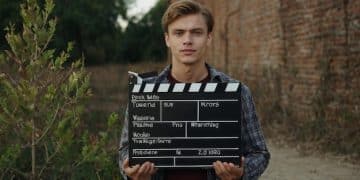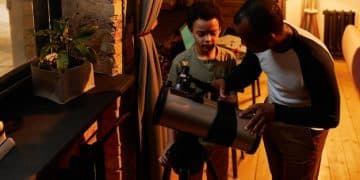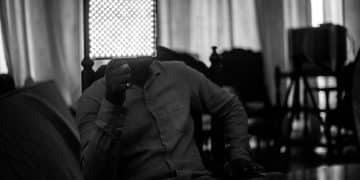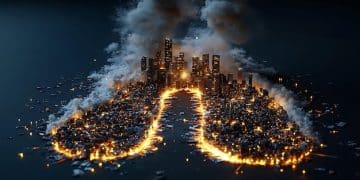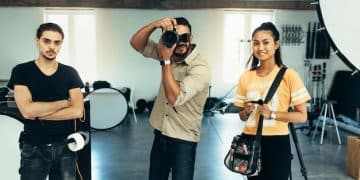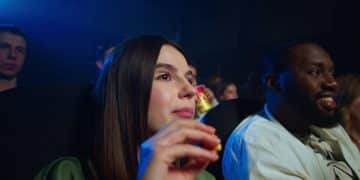Short Film Cinematography: Pro Looks on a Budget
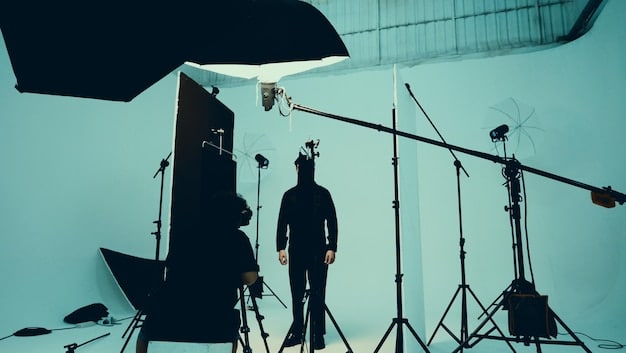
Short Film Cinematography: Achieving a Professional Look with Limited Resources is possible by using natural light, creative angles, and affordable equipment. Proper planning and post-production can elevate a short film’s visual quality without breaking the bank.
Creating a short film can be an incredibly rewarding experience. However, many aspiring filmmakers are often discouraged by the perceived high costs of achieving professional-looking cinematography. The truth is, with careful planning and a little creativity, you can master short film cinematography: achieving a professional look with limited resources.
This article will explore practical tips and techniques to elevate your short film’s visual aesthetic without breaking the bank. Let’s dive into the world of short film cinematography: achieving a professional look with limited resources.
Understanding the Basics of Cinematography
Before you start thinking about fancy equipment, it’s essential to understand the fundamental elements that contribute to good cinematography. This includes understanding lighting, composition, and camera movement. Short film cinematography: achieving a professional look with limited resources begins with mastering these basics.
Lighting: Natural vs. Artificial
One of the most significant aspects of cinematography is lighting. Here’s how to manage it effectively:
- Natural Light: Utilizing natural light can save you a lot of money. Shooting during the golden hour (the hour after sunrise and the hour before sunset) can provide warm, flattering light.
- Reflectors: Simple reflectors can bounce sunlight into shadowed areas, creating a more balanced look.
- Artificial Light: If you need artificial light, consider using LED panels, which are energy-efficient and relatively inexpensive.
Understanding how to manipulate light, whether natural or artificial, is crucial in achieving the aesthetic you desire. Experiment with different light sources and angles to see what works best for your scene.
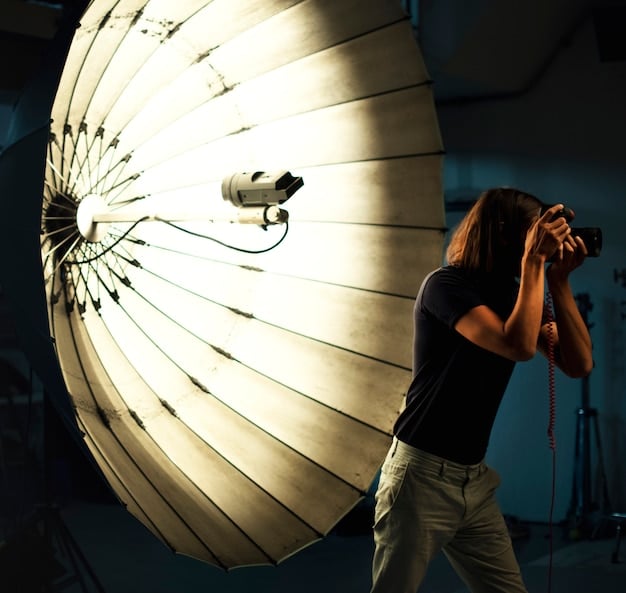
Composition and Framing
Composition refers to how elements within a scene are arranged. This impacts the viewer’s emotional response and understanding of the story:
- Rule of Thirds: Dividing your frame into nine equal rectangles and placing key elements along these lines or at their intersections can create visually appealing shots.
- Leading Lines: Using lines to guide the viewer’s eye to the main subject can add depth and interest.
- Symmetry: Symmetrical compositions can create a sense of balance and order, while asymmetry can create tension.
Thoughtful composition can elevate the look of your film, making it seem more professional and polished. Good framing is essential for impactful short film cinematography: achieving a professional look with limited resources.
Mastering the basic elements of cinematography helps improve the overall quality of the film. By focusing on these techniques, filmmakers can create visually appealing stories, even with limited resources.
Affordable Equipment Options
Many filmmakers believe that expensive gear is necessary for professional-looking cinematography. However, there are many affordable options that can help you achieve stunning visuals without breaking the bank. Exploring such options helps with short film cinematography: achieving a professional look with limited resources.
Camera Choices
You don’t need the latest Hollywood camera to shoot a great short film. Some great options include:
- DSLRs and Mirrorless Cameras: These cameras offer excellent image quality and versatility at a reasonable price.
- Smartphone Cameras: Modern smartphones have impressive camera capabilities and can shoot high-quality video.
Experimenting with the tools you have readily available is a great first step. Just ensure the camera is equipped with the basic features to perform short film cinematography: achieving a professional look with limited resources.
Sound Equipment
Good sound is just as important as good visuals. Consider these affordable options:
- Shotgun Microphones: These microphones can capture clear audio from a distance.
- Lavalier Microphones: These small microphones can be attached to actors for close-up audio.
- Audio Recorders: A dedicated audio recorder can improve the quality of your sound recordings.
Do not underestimate the power of clear sound. Investing in quality audio equipment, even on a budget, can significantly enhance the overall quality of your film. Keep an eye out for deals, and don’t be afraid to invest in used equipment, but don’t compromise on this key ingredient for short film cinematography: achieving a professional look with limited resources.
Using affordable equipment does not mean that you have to compromise on the quality of the film. By carefully selecting your gear and understanding its capabilities, you can create visually stunning and sonically captivating short films. Remember, the story and its execution are more important than the equipment itself.
Creative Camera Techniques
Beyond equipment, mastering creative camera techniques can significantly enhance your film’s visual appeal. These techniques can add depth and character to your frames, creating a more engaging viewing experience. This section is about adding character with short film cinematography: achieving a professional look with limited resources.
Camera Movement
Effective camera movement can add dynamism and emotion to your scenes. Consider these techniques:
- Handheld Shots: These can create a sense of immediacy and realism.
- Tripod Shots: Using a tripod can provide stable, smooth shots.
- DIY Dolly: Create a simple dolly using a skateboard or a rolling office chair for smooth tracking shots.
Camera movements should always serve the story and enhance the emotional impact of the scene. Practice these techniques and adjust them to fit your unique style.
Angles and Perspective
Experimenting with different camera angles and perspectives can dramatically alter the way your audience perceives a scene. Let’s examine different styles and how it ties into short film cinematography: achieving a professional look with limited resources.
A low-angle shot can make a character appear powerful, while a high-angle shot can make a character seem vulnerable. Dutch angles (tilting the camera) can create a sense of unease or disorientation. Point-of-view shots can place the audience directly into the character’s experience.
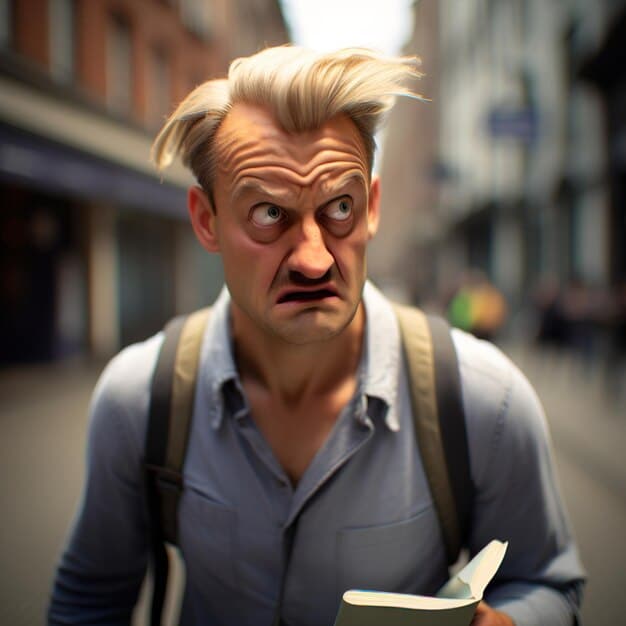
By thoughtfully selecting your camera angles and perspectives, you can add layers of meaning to your shots, enhancing the depth and complexity of your film.
Employing creative camera techniques can transform your short film into a visually compelling experience. Effective camera movement, thoughtful angles, and innovative perspectives can elevate your storytelling and leave a lasting impression on your audience.
Budget-Friendly Lighting Setups
Lighting is a crucial element of cinematography, but it doesn’t have to be expensive. With some creativity, you can create professional-looking lighting setups on a budget. Here’s how you can achieve short film cinematography: achieving a professional look with limited resources, specifically with lighting.
Using practical lights (lamps and fixtures already present in the location) can add realism and depth to your scenes. You can modify these lights by adding diffusion material (like tracing paper or fabric) to soften the light or using colored gels to change the color temperature. Think of different light setups and compare how they affect short film cinematography: achieving a professional look with limited resources.
DIY Lighting Solutions
There are many ways to create your own lighting equipment:
- Homemade Softboxes: Use cardboard boxes and diffusion material to create softboxes for your lights.
- Bounce Boards: White foam boards can be used to bounce light and fill in shadows.
- Clamps and Stands: Use inexpensive clamps and stands to position your lights and reflectors.
DIY lighting solutions can be just as effective as expensive equipment. The key is to experiment and find what works best for your specific needs. In fact, using these at-home tools can improve short film cinematography: achieving a professional look with limited resources.
Color Temperature: The Importance of White Balance
Color temperature refers to the warmth or coolness of a light source, measured in Kelvin (K). Different light sources have different color temperatures, and it’s important to set your camera’s white balance accordingly. Here’s how it impacts short film cinematography: achieving a professional look with limited resources
Setting the correct white balance ensures that colors are rendered accurately in your footage. You can use a gray card to calibrate your white balance before each shot.
Budget-friendly lighting setups can transform your short film into a visually stunning piece. By using practical lights, DIY solutions, and paying attention to color temperature, you can create professional-looking lighting without overspending.
Post-Production Techniques
Post-production is where you can polish your footage and add those final touches that make your short film shine. Editing, color correction, and sound design are all crucial elements that can elevate your film’s overall quality. Proper post-production is crucial for good short film cinematography: achieving a professional look with limited resources.
Editing: Telling the Story
The editing process involves assembling your footage into a cohesive and engaging narrative, ensuring good short film cinematography: achieving a professional look with limited resources. Here’s all that you need to know:
Choose the best takes, cut unnecessary footage, and create a rhythm that keeps the audience engaged. Transitions (like fades, dissolves, and wipes) can be used to smoothly connect scenes.
Sound Design
Sound design involves adding sound effects, music, and dialogue to create a rich and immersive audio experience. Pay attention to the ambience of the scene, and add sound effects that enhance the realism and emotion. Music can be used to underscore the emotional tone of the scene.
- Music: Finding the right music can dramatically enhance the emotional impact of your film.
- Sound Effects: Adding sound effects can bring your scenes to life.
Sound design is a crucial aspect of filmmaking that can significantly impact the viewer’s experience. This is how it can improve short film cinematography: achieving a professional look with limited resources.
Mastering post-production techniques is essential for bringing your short film to its full potential. Thoughtful editing, precise color correction, and immersive sound design can transform your footage into a professional-grade cinematic experience. This is another component of short film cinematography: achieving a professional look with limited resources.
| Key Point | Brief Description |
|---|---|
| 💡 Lighting | Use natural light and affordable LED panels. |
| 🎥 Camera | DSLRs, mirrorless cameras, and smartphones can work. |
| 🎬 Editing | Focus on storytelling and pacing. |
FAQ
Utilizing natural light, investing in affordable sound equipment, and focusing on composition can significantly improve the visual quality of your film without breaking the bank.
Yes, modern smartphones have impressive camera capabilities and can shoot high-quality video. The key is to use good lighting, stabilize your shots, and pay attention to composition.
Sound is just as important as visuals. Good sound design can significantly enhance the viewer’s experience and make your film feel more professional. Make sure not to overlook this element of short film cinematography: achieving a professional look with limited resources.
Essential post-production techniques include editing, color correction, and sound design. These techniques can help you polish your footage and add those final touches that make your film shine.
You can create a DIY lighting setup using homemade softboxes, bounce boards, and inexpensive clamps and stands. Experiment with different setups to find what works best for your needs.
Conclusion
Achieving professional-looking cinematography on a limited budget is entirely possible with the right approach. By focusing on the basics, utilizing affordable equipment, and mastering creative techniques, you can elevate your short film’s visual quality.
Remember, the most important element of any film is the story. With thoughtful planning, creativity, and dedication, you can create a short film that captivates your audience, regardless of your budget.
